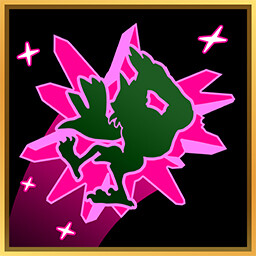Установить Steam
войти
|
язык
简体中文 (упрощенный китайский)
繁體中文 (традиционный китайский)
日本語 (японский)
한국어 (корейский)
ไทย (тайский)
Български (болгарский)
Čeština (чешский)
Dansk (датский)
Deutsch (немецкий)
English (английский)
Español - España (испанский — Испания)
Español - Latinoamérica (испанский — Латинская Америка)
Ελληνικά (греческий)
Français (французский)
Italiano (итальянский)
Bahasa Indonesia (индонезийский)
Magyar (венгерский)
Nederlands (нидерландский)
Norsk (норвежский)
Polski (польский)
Português (португальский — Португалия)
Português-Brasil (португальский — Бразилия)
Română (румынский)
Suomi (финский)
Svenska (шведский)
Türkçe (турецкий)
Tiếng Việt (вьетнамский)
Українська (украинский)
Сообщить о проблеме с переводом



 Chico, California, United States
Chico, California, United States 


























⠀⠀⠀⠀⠀⠀⠀⠀⣾⣿⠟⢻⡀⠀⠀⠀⠀⠀⠀⠀⠀
⠀⠀⠀⠀⠀⠀⠀⠀⠹⣿⣳⠖⠳⣄⡀⠀⠀⠀⠀⠀⠀
⠀⠀⠀⠀⡤⠒⠀⠂⡾⠉⠀⠀⠀⠀⠉⢳⡄⣄⡀⠀⠀
⠀⠀⠀⢸⡥⠀⣀⡼⢁⠀⢰⡄⠀⡄⠀⠀⣧⠀⠙⡆⠀
⠀⢀⣠⠼⠗⠚⠉⠠⠋⠀⠀⢷⣠⣧⠀⠀⠈⠳⢤⣇⠀
⠀⣾⣟⠒⠦⣄⠀⠀⠀⣠⡴⠋⠁⢈⠛⢦⣄⣠⣴⣾⣷
⢀⡟⠙⢶⣤⠬⠷⣼⡏⠉⠉⢩⡍⠹⠦⢤⣿⣤⣨⣿⠈
⡾⣡⠆⠁⠀⠀⠀⢠⡀⠀⠀⠀⢱⡀⠀⠂⠙⠎⠻⡅⠀
⢿⠁⠒⣤⠤⣤⣀⠀⢧⠀⠀⠀⣸⠃⠀⠀⠀⡶⣤⣽⠀
⠈⠳⣴⡇⠀⠀⠈⠛⢦⣄⣠⠾⢿⣄⣀⣠⠾⣡⠞⠁⠀
⠀⠀⠈⠉⠉⠉⠁⢧⢠⠟⣽⠀⢿⠀⢧⢰⡈⠀⠀⠀⠀
⠀⠀⠀⠀⠀⠀⠐⢫⠏⢸⠁⠀⠈⢳⠘⢧⣙⢦⠀
⠀⠀⠀⠀ ⠀⣠⣴⠶⠷⠶⣦⡀⠀⠀⠀⣀⣴⠶⠿⣶⣦⣀
⠀⠀⠀⠀⢀⣾⡟⠁⠀⠀⠀⠀⠙⣦⢀⡼⠋⠀⣀⠀⠀⠙⠻⣦
⠀⠀⠀⠀⣼⡟⠀⠀⠀⠀⠀⠀⠀⠈⠟⠀⢀⣿⣿⣇⠀⠀⢀⠙⠆
⠀⠀⠀⠀⣿⠃⠀⠀⠀⠀⠀⠀⠀⣠⣄⠀⢸⣿⣿⡿⢠⣾⣿⣷
⠀⠀⠀⠀⣿⡀⠀⠀⠀⠀⠀⠀⢸⣿⣿⣇⠸⣿⣿⠃⣿⣿⣿⡟
⠀⠀⠀⠀⠸⣧⠀⠀⠀⠀⠀⠀⢸⣿⣿⡟⠀⠀⠀⠀⠿⠿⠟⣀⣀
⠀⠀⠀⠀⠀⠙⢷⣄⠀⠀⠀⠀⠀⠙⣋⣤⣶⣾⣷⣦⠀⣠⣿⣿⣿⡆
⠀⠀⠀⠀⠀⠀⠀⠙⢷⣄⠀⠀⠀⣾⣿⣿⣿⣿⣿⣿⡆⣿⣿⣿⡿⠁
⠀⠀⠀⠀⠀⠀⠀⠀⠀⠉⠻⣦⡈⣿⣿⣿⣿⣿⣿⣿⣿⠈⠉⠉
⠀⠀⠀⠀⠀⠀⠀⠀⠀⠀⠀⠈⢿⣎⠛⣛⢿⣿⣿⣿⣿
⠀⠀⠀⠀⠀⠀⠀⠀⠀⠀⠀⠀⠀⠹⣿⠏⠀⠉⠻⠿⠋
⠸⡇⠀⠿⡀⠀⠀⠀⣀⡴⢿⣿⣿⣿⣿⣿⣿⣿⣷⣦⡀
⠀⠀⠀⠀⠑⢄⣠⠾⠁⣀⣄⡈⠙⣿⣿⣿⣿⣿⣿⣿⣿⣆
⠀⠀⠀⠀⢀⡀⠁⠀⠀⠈⠙⠛⠂⠈⣿⣿⣿⣿⣿⠿⡿⢿⣆
⠀⠀⠀⢀⡾⣁⣀⠀⠴⠂⠙⣗⡀⠀⢻⣿⣿⠭⢤⣴⣦⣤⣹⠀⠀⠀⢀⢴⣶⣆
⠀⠀⢀⣾⣿⣿⣿⣷⣮⣽⣾⣿⣥⣴⣿⣿⡿⢂⠔⢚⡿⢿⣿⣦⣴⣾⠸⣼⡿
⠀⢀⡞⠁⠙⠻⠿⠟⠉⠀⠛⢹⣿⣿⣿⣿⣿⣌⢤⣼⣿⣾⣿⡟⠉
⠀⣾⣷⣶⠇⠀⠀⣤⣄⣀⡀⠈⠻⣿⣿⣿⣿⣿⣿⣿⣿⣿⣿⡇
⠀⠉⠈⠉⠀⠀⢦⡈⢻⣿⣿⣿⣶⣶⣶⣶⣤⣽⡹⣿⣿⣿⣿⡇
⠀⠀⠀⠀⠀⠀⠀⠉⠲⣽⡻⢿⣿⣿⣿⣿⣿⣿⣷⣜⣿⣿⣿⡇
⠀⠀ ⠀⠀⠀⠀⠀⢸⣿⣿⣷⣶⣮⣭⣽⣿⣿⣿⣿⣿⣿⣿⠇
⠀⠀⠀⠀⠀⠀⣀⣀⣈⣿⣿⣿⣿⣿⣿⣿⣿⣿⣿⣿⣿⣿⠇
⠀⠀⠀⠀⠀⠀⢿⣿⣿⣿⣿⣿⣿⣿⣿⣿⣿⣿⣿⣿⣿⠃
12.) Not all owls hoot! Barn Owls make hissing sounds, the Eastern Screech-Owl whinnies like a horse, and Saw-whet Owls sound like, well, an old whetstone sharpening a saw. Hence the name.
13.) Owls are zygodactyl, which means their feet have two forward-facing toes and two backward-facing toes. Unlike most other zygodactyl birds, however, owls can pivot one of their back toes forward to help them grip and walk.
8.) The Northern Hawk Owl can detect—primarily by sight—a vole to eat up to a half a mile away.
9.) In fat years when mice are plentiful, usually monogamous Boreal Owls are apt to be promiscuous. Because easy prey means less work for parents feeding their young, males have been caught mating with up to three females, while females have been seen with at least one beau on the side.
10.) Barn Owls swallow their prey whole—skin, bones, and all—and they eat up to 1,000 mice each year.